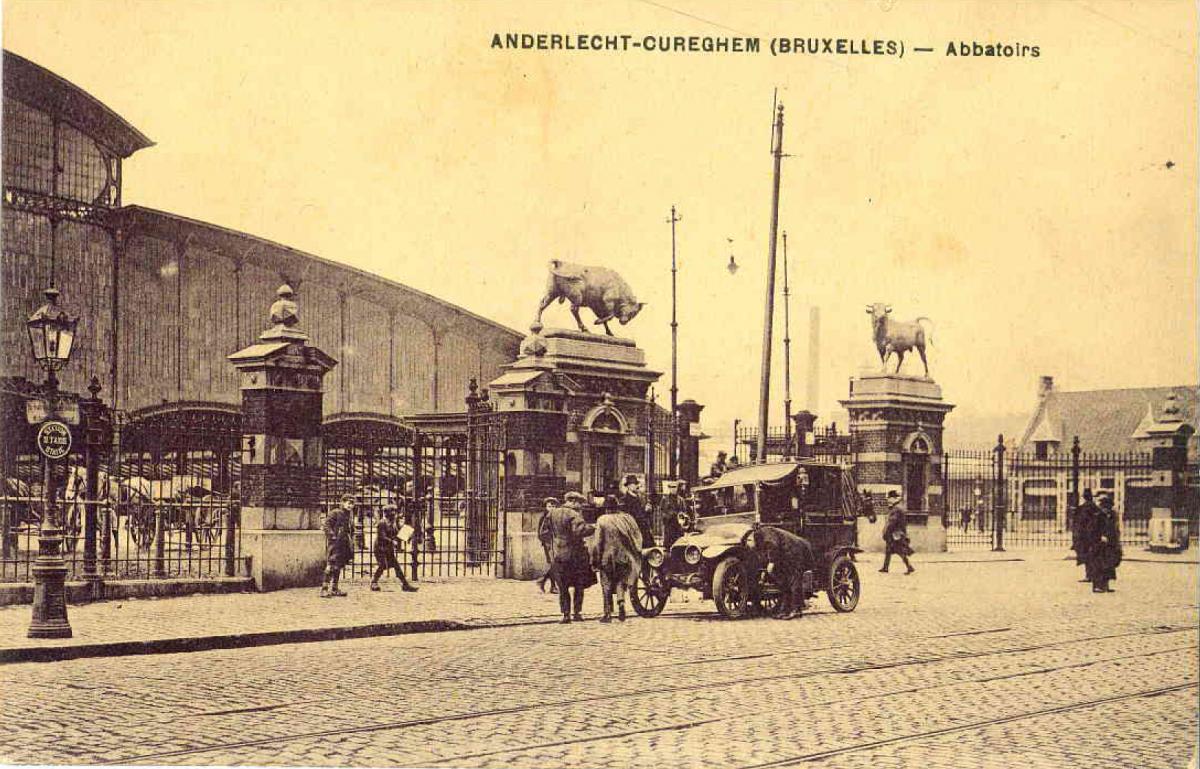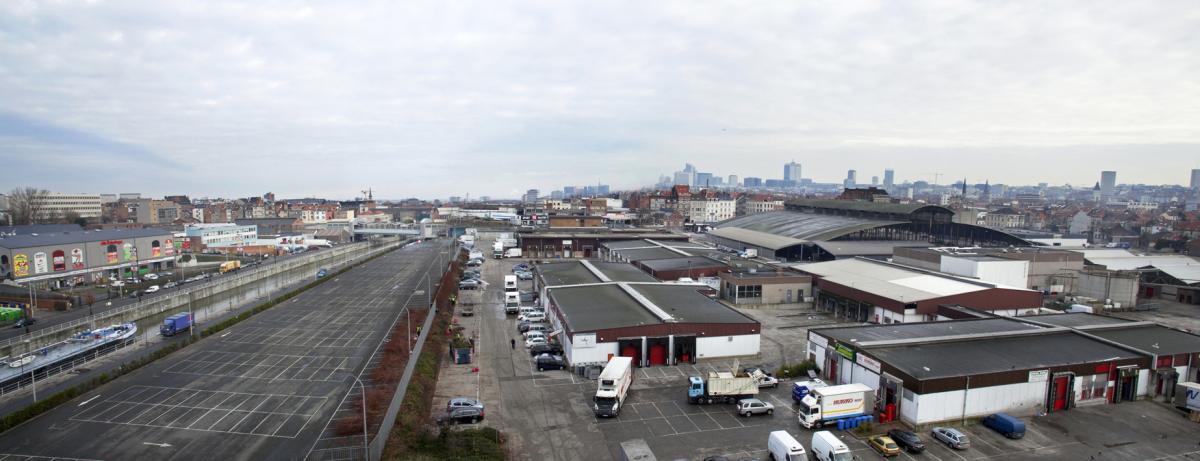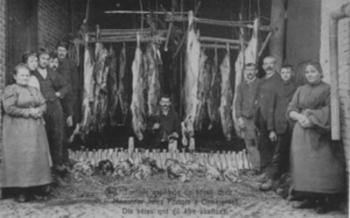Ever since 1842, Brussels - along with a few of its larger suburbs - has had an abattoir at the Ninoofse Poort. Brussels was the only city that also boasted a flourishing cattle market.
However, the lack of adequate provision for bringing cattle to the site caused a great deal of inconvenience in neighbouring Brussels' streets. When the abattoir became full to bursting point around the 1870's, the need was felt to tackle the problem of cattle transport in the stations of Brussels.
 Kuregem “in the picture”
Kuregem “in the picture”
The then minister of Public Works, Sainctelette, developed short-term plans to properly equip one station in Brussels for the transport of cattle. When in 1874, the plan failed to integrate Anderlecht in Brussels in order to build a new cattle market and abattoir in that area, Brussels requested that one abattoir should be built for the city and also its suburbs. The location of Kuregem seemed ideal, given the fact it boasted a canal and the recently constructed West Station (1872). However, the project sank due to disagreement between the municipalities and about the division of the profits, as a result of which the Brussels abattoir remained in operation until 1926.
 “Our” history
“Our” history
The history of our abattoir did not start until the end of the 19th century, more specifically in 1888, when the town of Anderlecht granted a concession to the brothers Adolphe and Guillaume Charlet, Emile Pierret, Emile Tiron and Henri Chevalier for the construction and development of a new abattoir and cattle market.
Picture left: Emile Thiron, an architect from Charleroi, sought inspiration from the “Grande Halle de la Vilette” in Paris for drawing up the plans.
This led to the launch of the NV Abattoirs et Marchés d’Anderlecht-Cureghem. Among the first shareholders were Crédit Général de Belgique, a man called Joseph Ropsy-Chaudron (who our street was named after), and furthermore a count and several industrialists and traders. The main entrance was only built in 1901-1902, and it was designed by the architect Henri Rieck. The two bronze bulls gracing our entrance were designed by "animalier" Isidore BONHEUR (www.bronze-gallery.com).
A piece of bravado
At the original swampy site of approximately 20 hectares (today still over 10 ha), a covered cattle market was built measuring 100 by 100 metres, after the ground was raised as required. The arched steel construction was supported by cast iron pillars (one every 10 metres), braced in turn by brick-built barrel vaulting; a pearl of 19th-century industrial architecture. Even today, the market hall is supported by no less than 219 tons of cast iron and 640 tons of iron. Renovation plans have recently been approved and work will start soon.
The abattoir was built behind the market, together with a railway station where cattle could be stabled. The administration was housed in the very characterful building on the right of the main entrance, which will also be included in the renovation works.
 The abattoir: an eventful history
The abattoir: an eventful history
The abattoir was first put into use in 1890. It experienced some teething troubles, but nevertheless managed to make a lot of profit until the First World War. After the war, in 1922, the town of Anderlecht exercised its take-over right, as anticipated in the concession agreement. For the town, the trading activities of the markets and abattoirs formed a significant source of revenue for the post-war rebuilding work. In addition, the site worked as a magnet for other trading activities, bringing flourishing trade and prosperity to the district.
During the Second World War, the abattoir was put under German supervision. The damaged railway bridge over the canal, which was the transport route for cattle, was no longer repaired. From then on, cattle were transported by haulage freight. When Joseph Bracops, the then mayor, decided to bar any unhealthy factories from Kuregem in the 1950s, plans were drawn up to demolish the abattoir to make room for a social housing district. In the golden sixties, the meat industry was nevertheless considered as too profitable and the demolition plans were shelved. Many modernisation works were quite controversial, some postponed until doomsday; eventually the abattoir lost its export license in 1970.
 A new dawn
A new dawn
When the town of Anderlecht bit the bullet in 1983 and decided to discontinue the running of the by then antiquated and loss-making abattoir, a new public limited company was set up under the name “Slachthuizen en Markten van Anderlecht” (Abattoirs and Markets of Anderlecht - subsequently Abattoir s.a.). The necessary capital was provided by approximately 150 people with a direct interest, who wanted to secure the survival of 'their' abattoir. Restructuring, investments and modernisation works meant that the lost export licence was quickly regained. From 1987, meat was once again exported from Anderlecht. Since October 2012, the companyname changed again into the actual denomination ABATTOIR nv-sa.

